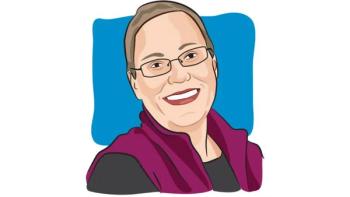
- Breast Cancer Special Issue
- Volume 1
- Issue 1
Flesh or Blood? Some Cancer Biopsies May Be Replaced With Genomic Blood Analysis
In some cases, genomic blood analysis may be effective enough to replace cancer biopsies.
Will a simple blood test ever be accurate enough to detect the presence of breast and other cancers as well as a biopsy can? A large study presented in June indicated that this strategy — known as a liquid biopsy – is looking promising.
A liquid biopsy is a genomic analysis aimed at detecting DNA that has been shed by tumors and is moving throughout the blood stream.
The study presented at the June 2016 annual meeting of the American Society of Clinical Oncology (ASCO) conducted liquid biopsies that searched for circulating tumor DNA (ctDNA) in blood samples from more than 15,000 patients with a variety of cancer types. It demonstrated that results from the liquid biopsies matched up with what researchers would have expected to find, correlating with mutations described in databases and in some cases from tumor biopsies.
ASCO experts said the research, described as the largest-ever liquid biopsy study, marks an important step forward for the field, but that more study is needed to establish the clinical utility of assays being developed throughout the testing industry.
In the study highlighted at ASCO, the Guardant360 next-generation sequencing test, which targets 70 genes, was used to analyze mutations among patients with 50 different tumor types, including breast. Most of the results were compared with data from The Cancer Genome Atlas (TCGA); some were correlated with results of genetic testing on tumor tissue.
Conducting mutation testing on tissue samples is still the gold standard, but the quantity and quality of tissue available for genomic testing after pathological analysis is often inadequate, said research presenter Philip Mack, Ph.D., professor and director of molecular pharmacology at the University of California Davis Comprehensive Cancer Center. He added that liquid biopsies would be particularly useful for assessing patients during the course of their disease.
“Probably the biggest role for plasma analysis will be occurring down the road as patients are progressing on therapies, as their tumors are evolving, as a way to monitor progression of those cancers,” said Mack.
Mack and colleagues analyzed samples from 15,191 patients with advanced lung cancer (37 percent), breast cancer (14 percent), colorectal cancer (10 percent) and other cancers (39 percent). In all, 17,628 blood samples were tested for ctDNA; most results were compared with the TCGA, while findings for 398 patients were correlated with results of genetic testing on tumor tissue.
For the available tumor samples, the assay matched testing for key abnormalities in EGFR, BRAF, KRAS, ALK, RET and ROS1 at the rate of 94 to 100 percent. Additionally, the assay was able to detect mutations at low levels of ctDNA. Half of all alterations were detected at or below ctDNA of 0.4 percent, Mack indicated. Overall, ctDNA mutations could be detected in 83 percent of the blood samples analyzed.
However, not all patients had sufficient ctDNA for the blood test, particularly individuals with the brain cancer glioblastoma, which researchers believe might be because the cell-free DNA cannot traverse the blood-brain barrier. As a result, researchers are seeking to improve the sensitivity of the test for extremely low levels of ctDNA, according to an ASCO press release.
In the area of clinical utility, the assay pointed to potential treatment options for nearly two-thirds of the patients, including FDA-approved drugs and agents being evaluated in clinical trials. Mack said that alterations detectable in ctDNA fractions as low as 0.06 percent responded to treatment.
ASCO spokesman Sumanta Kumar Pal, M.D., cautioned that there is no purpose in ordering such testing for cancers in which there are no drugs targeting the mutations that would be found — such as in certain gynecologic cancers — unless the patient is a candidate for a clinical trial evaluating that target.
“The utility is what we should all be doing across cancer types, because if we can’t do anything with that information, this technology, although quite eloquent, is unlikely to change the natural history of any one person’s cancer,” said Pal.
Articles in this issue
about 9 years ago
Anthracyclines for Breast Cancer? Who Needs Them?about 9 years ago
Waiting Rooms: A Breast Cancer Storyabout 9 years ago
The Cancer Registry Rationaleabout 9 years ago
Keeping Abreast of Immunotherapy in Breast Cancer




